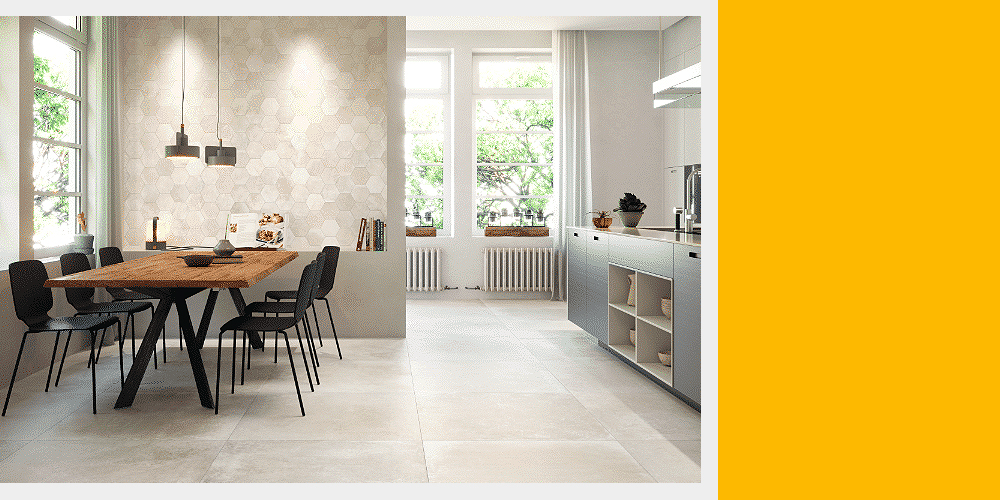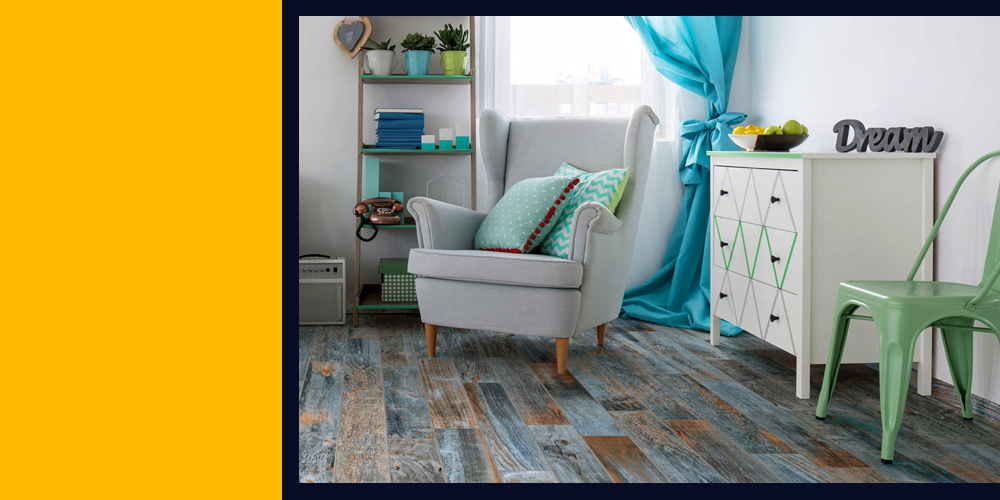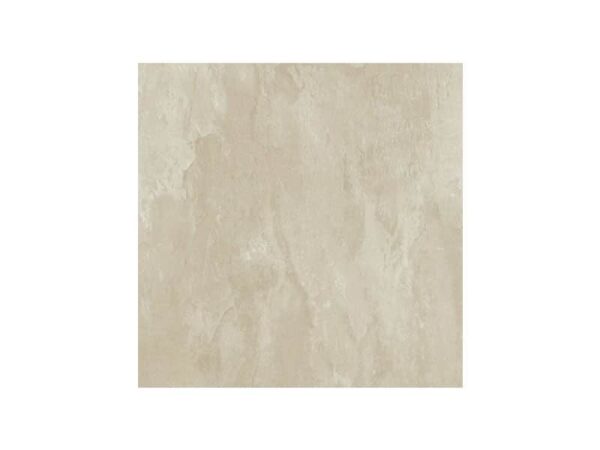What Are the Best
Tiles to Use for
Underfloor Heating?
As homeowners seek modern and efficient alternatives to traditional heating methods,
underfloor heating has surged in popularity.
Underfloor heating is fast becoming a serious contender to the conventional radiator as a way to heat a room. Available in various forms from piped water systems to thin electric cable underfloor heating, a good quality underfloor heating system is a great choice for extensions and refurbishments, saving wall space and more efficient warming.
We’d like to share some of the many queries we receive from customers around what are the best tiles for underfloor heating. So, let’s take a look at the importance of selecting the right tiles for underfloor heating and delve into some of the key considerations that contribute to a successful and efficient heating system.

Can You Use Any Tiles With Underfloor Heating?

One of the most common questions we get asked is “Can you use any tiles with underfloor heating?” Surprisingly it is very simple to answer – Yes! Whether porcelain or ceramic, all tiles are well-suited for underfloor heating. However, some are more suitable for certain situations (more on that later).
Tiles are renowned for their robustness and durability, offering a hard-wearing floor finish for the home. They also are excellent for conducting heat, allowing for quicker warm-up periods and retaining heat efficiently. This not only enhances efficiency but also contributes to cost-effectiveness, minimising energy bills. The extensive array of choices allows you to combine the practicality of tiles with the luxury of warmth underfoot!

Which Tiles Are Better For Underfloor Heating: Porcelain or Ceramic?

There’s not really a “right” answer to this question, but we would suggest choosing porcelain tiles over ceramic tiles for use with underfloor heating, especially in moisture-prone or constantly wet areas like commercial showers, because ceramic tiles are more porous.
Let’s take a closer look at some of the considerations around the suitability of porcelain and ceramic tiles for use with underfloor heating:

Porcelain Tiles
-
Thermal Conductivity: Porcelain tiles exhibit excellent thermal conductivity, meaning they efficiently transfer and retain heat. This makes them an ideal choice for underfloor heating systems, ensuring a warm and comfortable surface.
-
Durability: Porcelain is recognised for its durability, making it suitable for high-traffic areas like commercial showers. The dense composition of porcelain allows it to withstand the stresses of both foot traffic and temperature fluctuations associated with underfloor heating.
-
Low Water Absorption: Porcelain has a low water absorption rate, making it resistant to moisture. This is particularly crucial in wet areas where exposure to water is constant. Low water absorption contributes to the longevity of both the tiles and the underfloor heating system.
-
Compatibility with Underfloor Heating: Porcelain tiles are highly compatible with underfloor heating systems. They heat up quickly, efficiently distributing warmth across the surface. The low thermal resistance of porcelain ensures that the heat generated by the system is effectively transmitted to the room.
Ceramic Tiles
-
Thermal Conductivity: Ceramic tiles also exhibit good thermal conductivity, allowing for effective heat distribution. However, compared to porcelain, ceramics may have a slightly higher thermal resistance.
-
Affordability: Ceramic tiles are generally more budget-friendly than porcelain. This affordability makes them an attractive option for projects with cost constraints.
-
Water Absorption: Ceramic tiles have a higher water absorption rate compared to porcelain. While this might be a consideration in wet areas, proper sealing and maintenance can mitigate potential issues.
-
Compatibility with Underfloor Heating: Ceramic tiles are compatible with underfloor heating systems, providing a warm and inviting surface. However, their slightly higher thermal resistance may result in a marginally longer heat-up time compared to porcelain.
For a more in-depth understanding of the considerations around your choice of tile materials, we recommend exploring the comprehensive guide available at Warmup Undertile Heating. This valuable resource offers detailed insights into the compatibility of different tiles with underfloor heating systems, ensuring that your choice aligns seamlessly with your heating requirements.
At Target Tiles, we continuously curate our collection to provide you with the latest and most innovative options. Discover new horizons in tile design with our FS Star Patterned Floor Tiles, and add a touch of elegance to your space. Alternatively, explore our expansive collection of Discovery Large Format Floor Tiles that redefine the possibilities of underfloor heating aesthetics.

Are There Any Tiles You Cannot Use With Underfloor Heating?

While the majority of tiles are suitable for underfloor heating systems, certain types require cautious consideration due to their specific characteristics:

Quartz Tiles
Quartz tiles are crafted with a resin component and can exhibit reactions to heat. In some instances, this reaction may cause movement, and, in more severe cases, lead to the curling of tile edges. It's advisable to exercise caution when considering quartz tiles for areas with underfloor heating, and crucial to consult with the manufacturer. Ensuring that the specific type of underfloor heating is compatible with the tiles will mitigate potential issues and guarantee a successful installation.
Honed & Filled Travertine Tiles
Natural travertine features a honeycomb-like structure with inherent holes. To transform it into tiles, quarries fill these holes with resin. However, when used with underfloor heating, there may be instances where the resin pops out, particularly in certain areas. In cases where resin pops out, flexible grout or travertine repair kits can be applied to remedy the surface. This provides a practical solution for addressing any minor issues that may arise with honed and filled travertine tiles.

Do Thicker Tiles Stop Underfloor Heat From Coming Through?

When choosing the best tiles for underfloor heating you will notice that some tiles are thicker than others. Contrary to common misconceptions, the thickness of the tiles has no impact on the heat output of underfloor heating systems. Whether you opt for sleek, thin tiles or thicker varieties, the efficiency and warmth delivered by the system remain consistent.
However, while thickness itself doesn't affect heat output, it's noteworthy that very thick tiles (around 20mm thick) might contribute to an increased heat-up time. Thicker tiles take a bit longer to reach the desired temperature compared to their thinner counterparts.
For internal floor tiles, the sweet spot is often around 10mm in thickness. Tiles with this standard thickness are ideal for underfloor heating applications, ensuring a balanced equilibrium between efficient heat distribution and reasonable heat-up times.


How Good is Underfloor Heating?

In our opinion, underfloor heating is the future! The traditional approach of using radiators to heat a home takes up valuable wall space and most radiators are just not particularly nice to look at. On the other hand, embarking on a journey with underfloor heating brings forth a multitude of advantages, transforming not just the temperature of your space but the very essence of your home. Here are just a few of the many perks that underfloor heating can offer:

Efficient Warmth Distribution
Underfloor heating has the unique ability to warm a room from the ground up – meaning more warmth for objects, people, and pets! Unlike traditional radiators that create localised hotspots, underfloor heating ensures a consistent and even distribution of warmth throughout the entire space. Say goodbye to chilly corners and hello to a uniformly cosy environment.
Energy Efficient
With good insulation, underfloor heating stands as a paragon of energy efficiency. By operating at lower temperatures than conventional radiators, it optimises energy consumption, translating to cost savings on your utility bills. Embrace a heating solution that not only keeps you warm but also cares for your budget and the environment.
Fresher Air, Healthier Living
Traditional central heating systems often circulate air, creating dust and potential allergens. Underfloor heating, on the other hand, minimises air circulation, contributing to fresher, cleaner air in your living space. Breathe easy and relish the comfort of a healthier home environment.
Luxurious Feel Underfoot
Imagine stepping onto a floor that not only welcomes you with warmth but also exudes a luxurious feel underfoot. Underfloor heating provides the ultimate in comfort, turning your living space into a sanctuary where every step is a touch of indulgence.

Find Tiles & Underfloor Heating For Your Home
As you contemplate the transformative benefits of underfloor heating, we invite you to explore our modern underfloor heating options. Elevate your home's ambience and comfort by choosing from our carefully curated selection of tiles designed to complement and enhance the advantages of underfloor heating and discover the perfect fusion of style and warmth at Target Tiles today!
Thanks for reading – we hope you found this article useful. If you feel you still have questions why not check out some of our other helpful blogs or get in touch with our friendly staff for more information?
Recent Posts
Why Choose Us?
- Free Delivery over £249*
- Free Sample Delivery*
- 10,000 Square Meters in Stock





